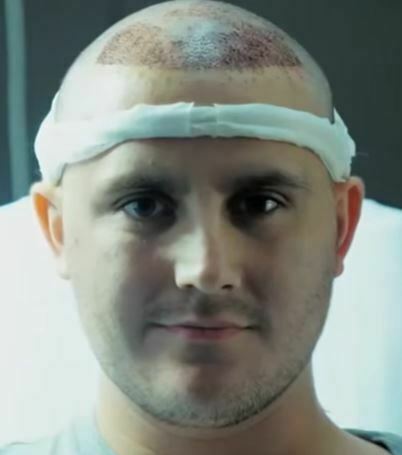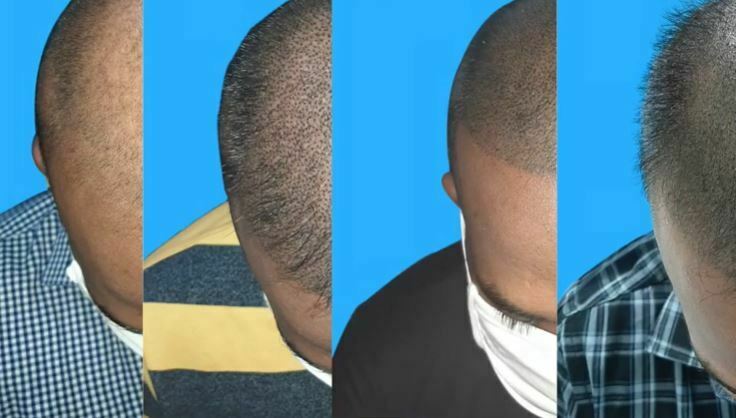If you’ve been wondering what to do about your hair loss problems, then you are in the right place. Nowadays, there are different ways to tackle this embarrassing issue that affects millions. Among such methods, we find scalp micropigmentation, a form of permanent makeup, and hair transplant. However, both methods tackle the same problem; there are significant differences between the two. So today, we’ll be telling you all about scalp micropigmentation vs. hair transplant.
Scalp Micropigmentation is a non-invasive treatment that uses detailed micro-needles to deposit pigment into the scalp. The result creates the appearance of tiny hair follicles that help thicken and restore the look of fuller hair. Hair transplant surgery helps create a full head of hair through a surgical process.
Though both treatments may sound intimidating at first, keep in mind they could offer the appearance of your dreams and provide that confidence boost you’ve been looking for. If you wish to know more about these two popular options, continue reading and learn all about scalp micropigmentation vs hair transplant and which method would be the absolute best choice for you.
Scalp Pigmentation FAQ’s
How do I get rid of scalp pigmentation?
The laser scalp micropigmentation tattoo removal procedure is very similar to removing a tattoo from elsewhere on your body. The only difference is that it’s actually easier to correct the scalp pigmentation issues, as the ink used is placed at a shallower depth than tattoos on the body.
Does scalp pigmentation work?
Scalp micropigmentation has become such an effective hair loss solution because of its consistently natural and undetectable results. Professionals take pride in seamlessly replicating each hair follicle to create a perfect match for each client.
How long does scalp micropigmentation last?
Most of all, the skills of the technician and the techniques used will play an important part in how long it will last. The rough estimate given to clients of how long their procedure will last is around the five-year mark. It’s important to ensure clients know that SMP ( hair tattoo ) is not permanent.
How much does scalp micropigmentation cost?
The total scalp micropigmentation cost will depend on the practitioner and the extent of the treatment. Cost estimates range from $1,800 to $4,000 for a typical treatment for balding. Meanwhile, scar treatment can run less, between $1,200 to $2,500, since it usually covers less area.
Does scalp micropigmentation affect hair transplant?
Even if an individual chooses to undergo a hair transplant procedure first, they can still receive scalp micropigmentation after their transplant procedure to fill in any areas in which hair failed to re-grow or to help mask some of the scars that can result from a hair transplant.
Should I get a hair transplant or SMP?
- Previous hair transplant patients who have become heavily donor depleted, often with significantly scarred donor areas, are ideal candidates for SMP. It offers the patient an ability to achieve a normal-looking donor area without further hair transplantation as SMP addresses the scarring and see-through donor areas.
- Micropigmentation may be the preferred choice if you want to avoid surgery and like the appearance of subtle stubble on the scalp over a completely bald head. Those who have a limited donor supply may also benefit from micropigmentation.
- The hair transplant surgery may be right for you if you are willing to undergo surgery to restore the hairline or add fullness to thinning hair physically. Micropigmentation only gives the illusion of more hair, whereas a hair transplant replaces lost hair with a patient’s natural hair.
Can you have both scalp pigmentation and hair transplants done?
There are benefits to both hair transplant surgery and micropigmentation that may make one a better option for your needs than the other. Some people even choose to undergo both treatments as micropigmentation can be used to enhance the results of hair transplant treatment by creating an appearance of fuller coverage or masking scars from the donor site.
How much does a hair transplant cost?
The cost of a hair transplant is highly variable and typically ranges anywhere from $4,000 to $15,000. These costs are often all out of pocket. Most insurance companies consider a hair transplant a cosmetic procedure. The cost of hair transplants is dependent on many different factors.
Micropigmentation: What to Know

- Micropigmentation is a non-surgical alternative to hair transplant surgery. With micropigmentation, small amounts of pigment are applied into the scalp to mimic the hair follicles, creating a natural, fuller-looking hairline.
- Micropigmentation may be used to make the hair look fuller, mask scars and birthmarks, or enhance the appearance of a hair transplant.
- Many people think of micropigmentation as essentially a hairline tattoo. Although similar, micropigmentation is performed slightly differently than a standard body tattoo. For example, the diameter of the needle used to apply pigment is much smaller to mimic the appearance of hair more closely.
- The shape of the needle is jagged instead of round to further create a natural look. The pigment used is also different than pigments used in standard tattoos as they are customized to match the recipient’s hair.
Hair Transplant: What to Know

- Hair transplant surgery, also called follicular unit restoration (FUT), can help restore a receding hairline and add volume to the hair.
- Hair transplant surgery helps create a full head of hair through a surgical process in which healthy hair follicles are removed from a donor site and inserted into the area of the scalp where hair is thinning or has become bald.
- The hair transplant process generally begins with harvesting hair follicles from a donor site, usually at the back of the scalp. The donor site is numbed, and a small strip of tissue is removed.
- Individual follicular units are then removed from the strip of tissue. The collected follicular units are then inserted into the scalp area where baldness or thinning is present.
- Immediately after surgery, the hair will look stubbly, and scabs will form. It will take about three months for the newly transplanted hair to start growing in. The final results will be noticeable as the new hair usually grows.
What to keep in mind when choosing one method over the other?
Ability to style your hair
While SMP realistically mimic hair follicles, it does not replace or restore hair. A medical hairline tattoo is strictly cosmetic, but it will give the recipient the appearance of a freshly shaved head or, in the case of diffuse baldness, it camouflages the scalp within the remaining hair, eliminating the contrast of a bare scalp peeking through thinning hair.
Likelihood of success
A surgical hair transplant requires that the patients’ scalp be receptive to new follicles and, of course, the patient must also have a viable donor site from which to remove healthy hair follicles for transplant. On the other hand, SMP can be performed on a fully or partially bald scalp without shaving or the risk of rejection.
Aesthetic improvement
Results from a surgical hair transplant are dramatic and often visible immediately following the procedure. In stark contrast, non-surgical scalp micropigmentation will slowly fill in and define your existing hairline with a custom-selected pigment mix specially designed to mimic your hair’s natural growth patterns as well as your hair’s various shades and colors.
Length of recovery
SMP is typically completed in 3 non-consecutive sessions. The spacing of sessions helps gradually introduce subtle changes in the recipient’s appearance over the course of several weeks. While the healing period required for a surgical hair transplant is not excessive, a medical hairline tattoo requires zero downtime whatsoever.
Cost
When comparing surgical hair transplants to non-surgical SMP, the difference in cost often gives micropigmentation the edge over hair transplants. That said, scalp pigmentation may need future touch-ups, whereas a hair transplant is a one-time deal.
Scalp Pigmentation Pros and Cons:
- PRO1. Immediate Results. You can come in that same day bald and leave with a new hairline and a fuller look on your head.
- PRO2 Non-invasive. Scalp Micropigmentation is not a surgery, and for that reason, clients can get the treatment and go back to work within 24-48 hours.
- PRO3. On average, Scalp Micropigmentation is much more budget-friendly than a hair transplant allowing individuals to receive a hair loss treatment without breaking the bank.
- CON1. Scalp Micropigmentation gives you the look of a short buzz cut. If you are someone that wants the look of long flowy hair, then a hair transplant may be the better option.
- Perhaps some Before and After Scalp Micropigmentation Results and Photos may help you make up your mind.
Hair Transplant Pros and Cons:
- PRO1. It is a viable hair loss option for those with minimal hair loss and a strong donor area. This will give clients the look of real, full hair.
- CON1. Often, there is simply not enough donor area in the back of the head to sufficiently cover the top in an individual who has suffered a lot of hair loss. This means that individuals need to go back for subsequent surgeries.
- CON2. Hair transplants typically take 6-12 months to start seeing results.
- CON3. Hair transplants can cost a lot of money and hurt the bank account. Also, because it is a surgery, you’ll want to plan to be out of work for some time.



